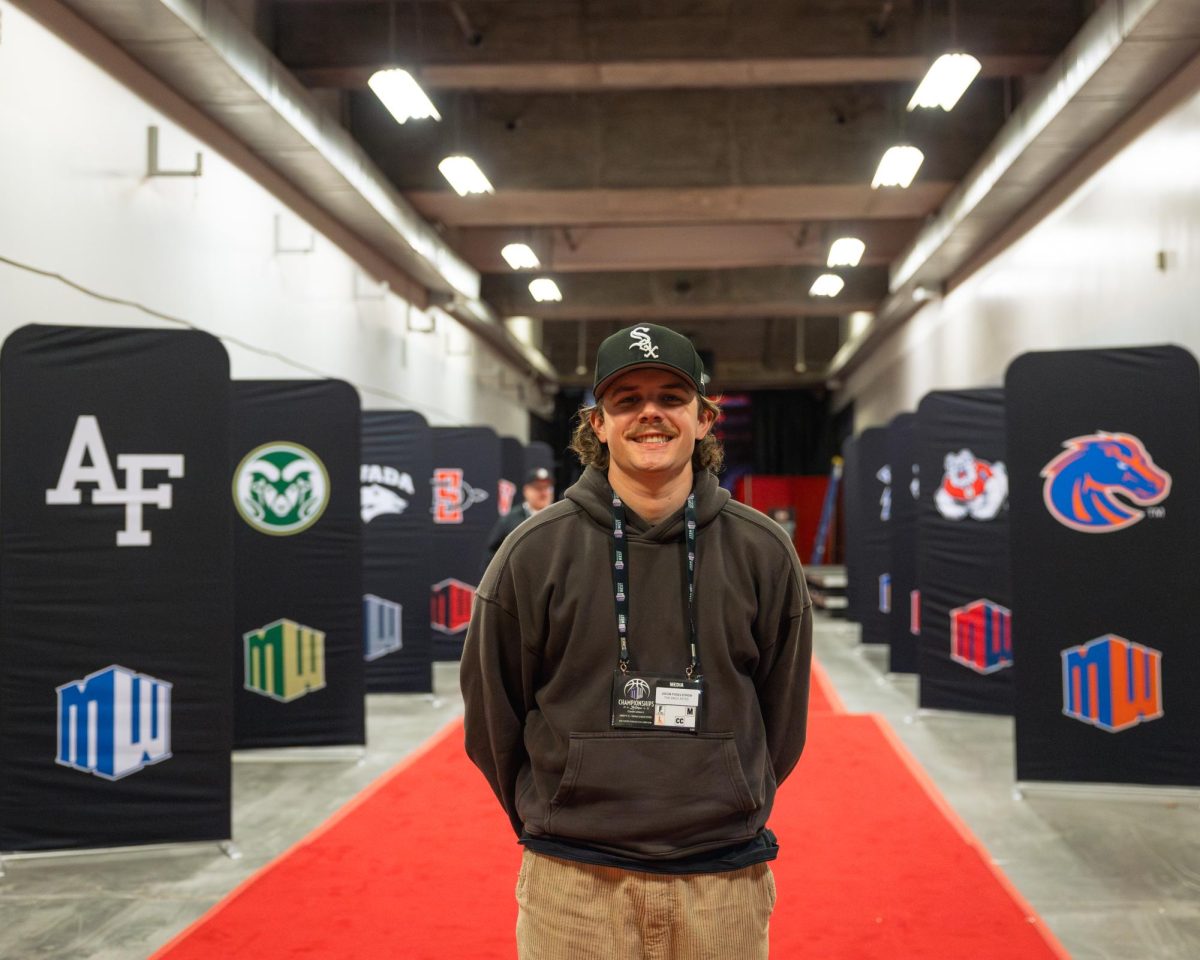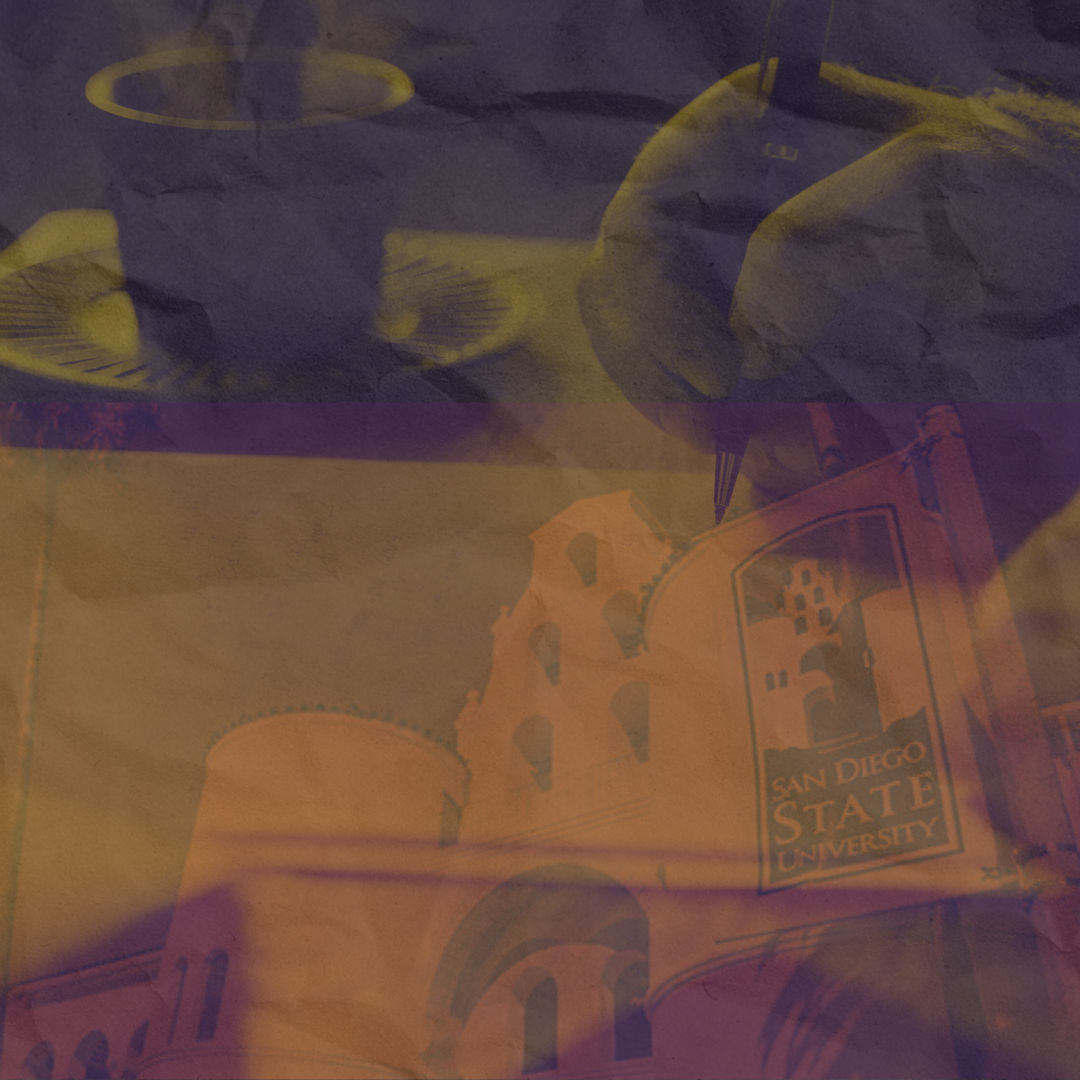 It was time to head home, but first I had to stop at the commissary. I loosely followed the shootout between San Bernardino County sheriffs and suspected killer Christopher Dorner. Truth be told, I was more interested in the hockey game between the Anaheim Ducks and Chicago Blackhawks. Sucked into the game, I forgot about the battle unfolding near Big Bear.
It was time to head home, but first I had to stop at the commissary. I loosely followed the shootout between San Bernardino County sheriffs and suspected killer Christopher Dorner. Truth be told, I was more interested in the hockey game between the Anaheim Ducks and Chicago Blackhawks. Sucked into the game, I forgot about the battle unfolding near Big Bear.
Dorner came back into focus when I drove up to the front gate at Naval Station San Diego. Two gate guards approached wearing Kevlar helmets and vests. They gripped semi-automatic rifles. Protective gear and visible weapons are not normal security posture at military bases. But it has been since Dorner allegedly killed three people last week. After 21 years in the Navy and almost four years in the Army National Guard, I knew protective gear is a pain to wear. It’s heavy, hot and never seems to fit right. I was surprised when I asked the guard if he was relieved to stop wearing it and he said he wanted to keep wearing it.
Cars lined up behind me, so I didn’t ask why he wanted to wear the cumbersome armor. I’m pretty sure I know his answer. It’s the fear spawned by Dorner who has inflicted six days of terror. Dorner was an everyman—the worst kind of terrorist. No one in the military suspected a former Naval officer with a winning smile to shoot them in cold blood. As Bob Dylan sang, “the times they are a-changing.”
Here’s what America has to fear in 2013: In a span of just more than seven months, a 20-year-old without a police record kills 26 at an elementary school; a 22-year-old man kills two while wounding another in a mall shooting, and a 25-year-old college student allegedly kills 12 and wounds 58 at a movie theater. No one seemed to give out obvious signs of being mass murderers. Given these circumstances, the gate guard can’t be blamed for wanting to be fully armed and protected when killers look like you and me.
That’s not what scares me, though. What scares me is how people have responded to Dorner. For reasons I can’t grasp, some hail him as a hero. I view his litany of complaints as nothing more than a ruse to keep his actions from being portrayed as they should be. I think his manifesto served his need to be the center of attention. By all accounts, he seems to be nothing more than a marginal Naval officer and a failed attempt at a police officer. To me, there’s no difference between his rambling manifesto and Theodore Kaczynski’s Unabomber manifesto, aside from the fact that Dorner is photogenic and Kaczynski looks scary.
Dorner’s defenders see him as a victim of society’s ills. They think he cares deeply about an America beset by waves of gun violence. They believe he’s an upholder of human rights seemingly trampled by callous politicians. And they completely buy in to the idea that he’s one more good guy spit out by the Los Angeles Police Department.
I think they’ve watched “Training Day” and Oliver Stone-esque conspiracy movies one time too many. Dorner’s training officer wasn’t Denzel Washington, especially because his training officer was a woman. I don’t know her, but I highly doubt she thinks she’s tougher than King Kong. In fact, Dorner never made a complaint until after she gave him a substandard review. Grievances as serious as police brutality can’t be suppressed in hopes of receiving positive evaluations. The irony is that Dorner is just as corrupt as his training officer, if that’s the reason he waited. Dorner sealed his own fate by not reporting it in a timely fashion. Whistleblowers lose credibility when they have an ax to grind.
It’s scary attempting to reason with people who believe in a conspiracy, nothing you say can dissuade them. Dorner’s death without a trial is only going to fan the flames. Perhaps my gate guard friend was right: Perhaps all Americans should be donning protective gear. I think we’re in for more Dorners in the months to come.
—Staff columnist Mike Heral is a journalism junior
Reflecting on the Christopher Dorner fiasco, I keep thinking how I have never seen the police mobilize en masse and devote so much time and manpower to tracking down and killing a suspect before. Yes, I’m using the word “suspect.” I’ll keep using it forever because Dorner will never be given a trial.
Remember how we supposedly live in a society where proof beyond a reasonable doubt is required before someone may be declared guilty of committing a crime? Last time I checked, the idea that citizens are innocent until proven guilty still applies if the suspect writes a manifesto and declares his intention to commit violent acts. This concept is essential in preserving our freedom. Nobody is guilty just because the cops say so.
The fact of the matter is, none of us know exactly how guilty or innocent Dorner actually was. I think he is guilty, but my opinion is irrelevant because, as a U.S. citizen, he’s protected from public opinion by due process. At least, that’s how it’s supposed to go. Where was the evidence that Dorner killed Monica Quan? Is it possible she and her fiancée were someone else’s victims? With an average of 1.8 gun-related homicides per day, it’s not like Los Angeles couldn’t possibly have another shooter.
Dorner may have shot at police officers, but then again, maybe he didn’t. Sure, he said he was going to target police officers and some officers were shot at, but that doesn’t mean he did it. In a city known as the nation’s gang capital, there are scores of people who will shoot at cops given an opportunity. The evidence linking Dorner to the shootings is circumstantial at best.
This doesn’t mean he is innocent, but the integrity of our criminal justice system depends on suspects getting their day in court. It simply does not matter what the person in question is accused of.
Back to my original point. Try to remember the last time you saw California law enforcement engage in a highly publicized statewide manhunt for a suspect. Has the Los Angeles Police Department ever pursued anyone as Dorner? I can’t think of a single murderer, rapist, pedophile or gang leader who ever received so much police attention. This selective allocation of police resources reveals the LAPD’s priorities. If a criminal threatens civilians, the LAPD has limited resources, but when an ex-cop goes rogue and crosses the infamous Blue Line, the entire LAPD saddles up, looking for revenge.
If you believe the LAPD was not motivated by revenge, consider the delivery women driving a truck on the wrong street in Torrance and at the wrong time during the manhunt. During its frantic search, police mistook a blue Toyota Tundra for a gray Nissan Titan. The two small Asian women didn’t match the description of the suspect, who was a 6-foot, 270-pound black man. The police opened fire on the vehicle from behind with no warning, shooting 47-year-old Margie Carranza and her 71-year-old mother, Emma Hernandez. A few blocks away and 25 minutes later, police officers opened fire on 38-year-old David Perdue, a white man, driving a black Honda Ridgeline pickup truck.
The LAPD’s reckless endangerment of civilians has been a hot topic lately. Comparing Dorner’s alleged body count with the damage inflicted on civilians by the LAPD while attempting to track Dorner, it’s easy to point to the LAPD as a greater threat to public safety. This dialogue is a distraction from a bigger issue that surfaced during this whole debacle. It’s no secret the LAPD has been susceptible to corruption and prone to violence against civilians. Historically, this has been especially true when speaking about the relationship between the LAPD and various minority groups. The American public isn’t surprised after hearing stories about police brutality anymore, which is one reason why many people were quick to sympathize with Dorner.
Make no mistake, if Dorner committed the atrocities attributed to his name, he was clearly in the wrong. However, it’s important to assess this situation with an eye for the symptoms of larger social problems. Dorner’s manifesto was an indictment of our fractured criminal justice system, which does little to fight the insidious spread of racism, discrimination, gender bias and poverty. His manifesto references the politicization of criminal justice, the racist structure of the war on drugs, the neoliberal paternalism inherent in American welfare and criminal justice policy and many other social issues. Regardless of anyone’s stance on Dorner’s alleged actions, it’s obviously time for greater transparency and accountability for U.S. law enforcement.
—Assistant Opinion Editor Kenneth Leonard is an English senior






